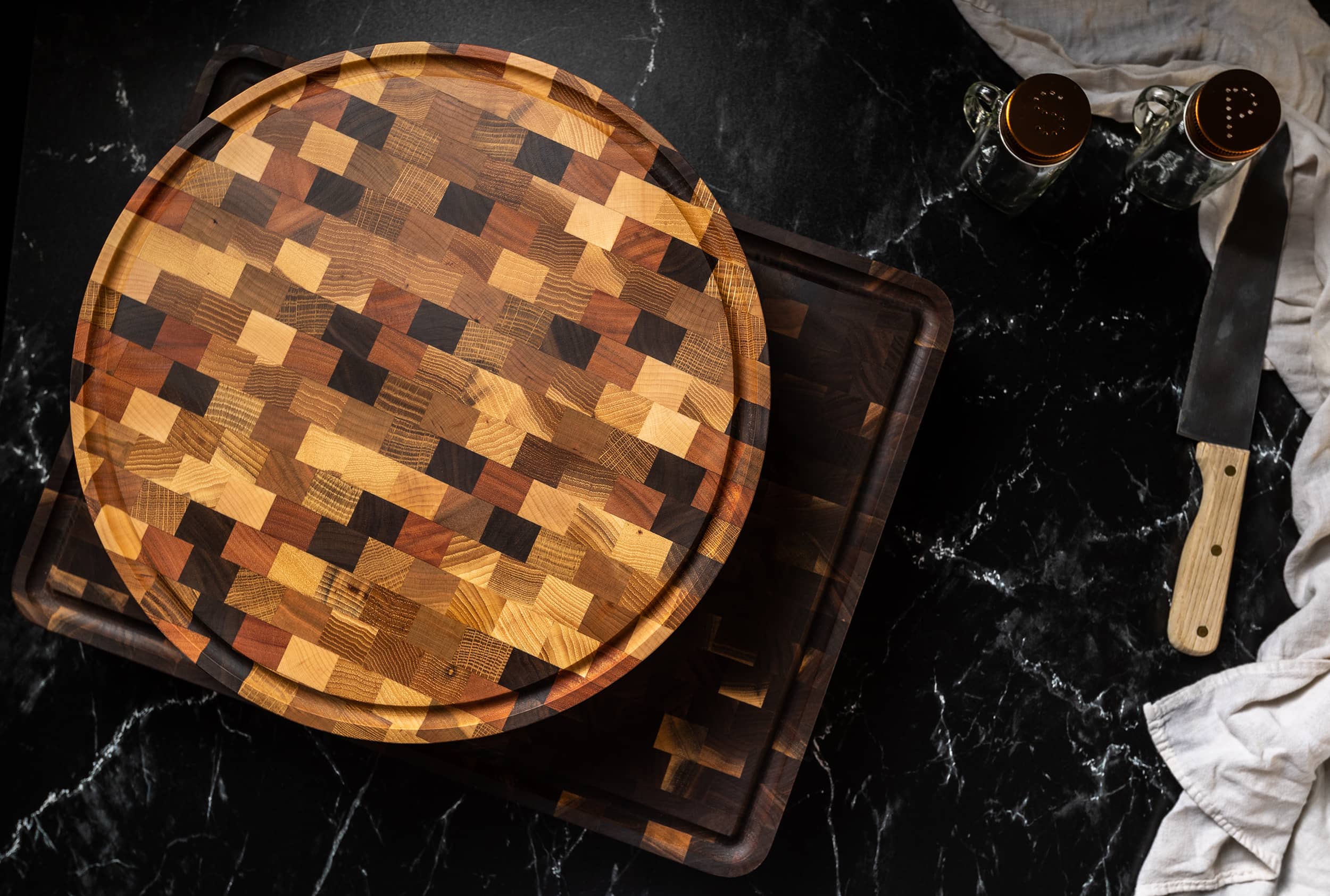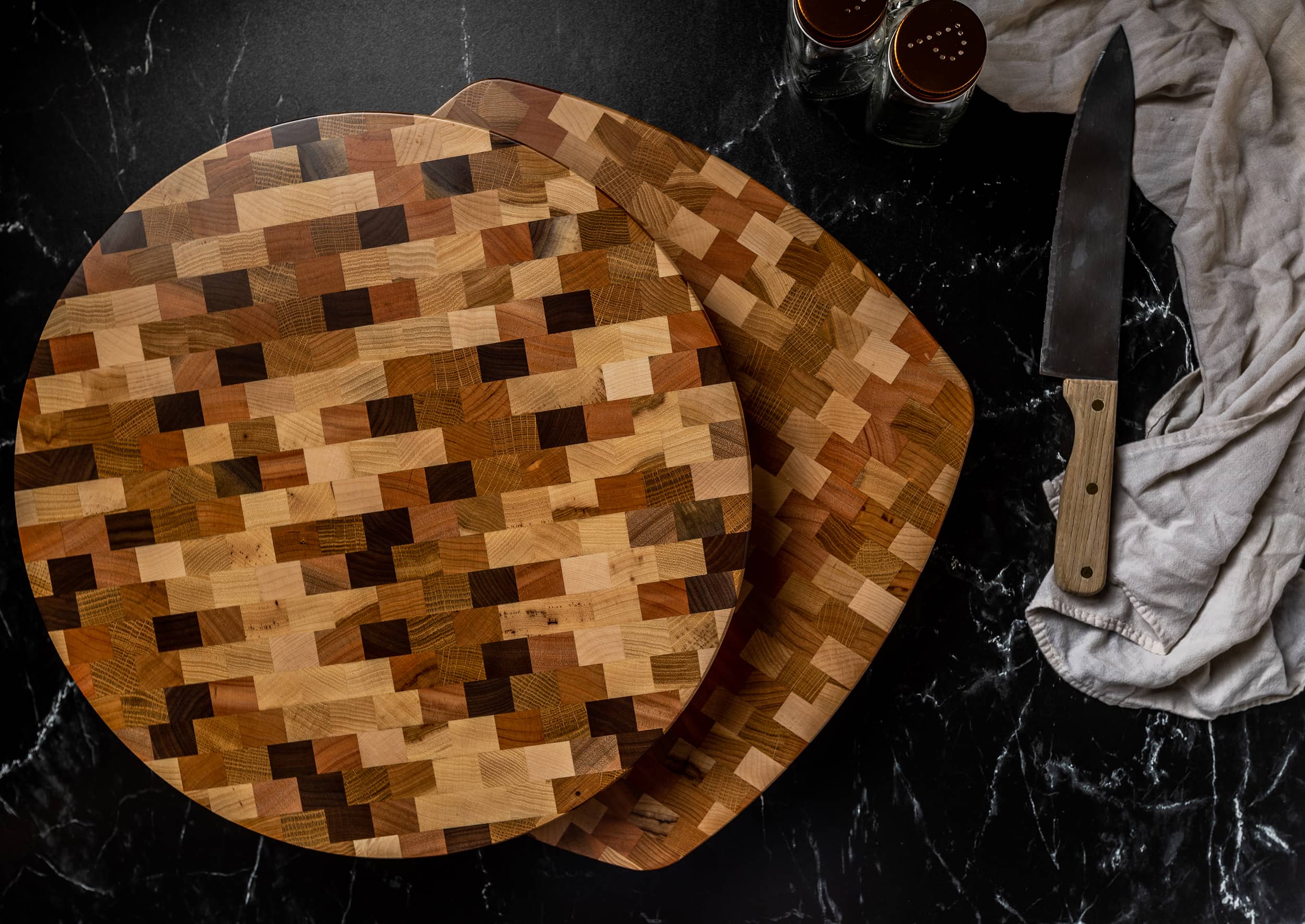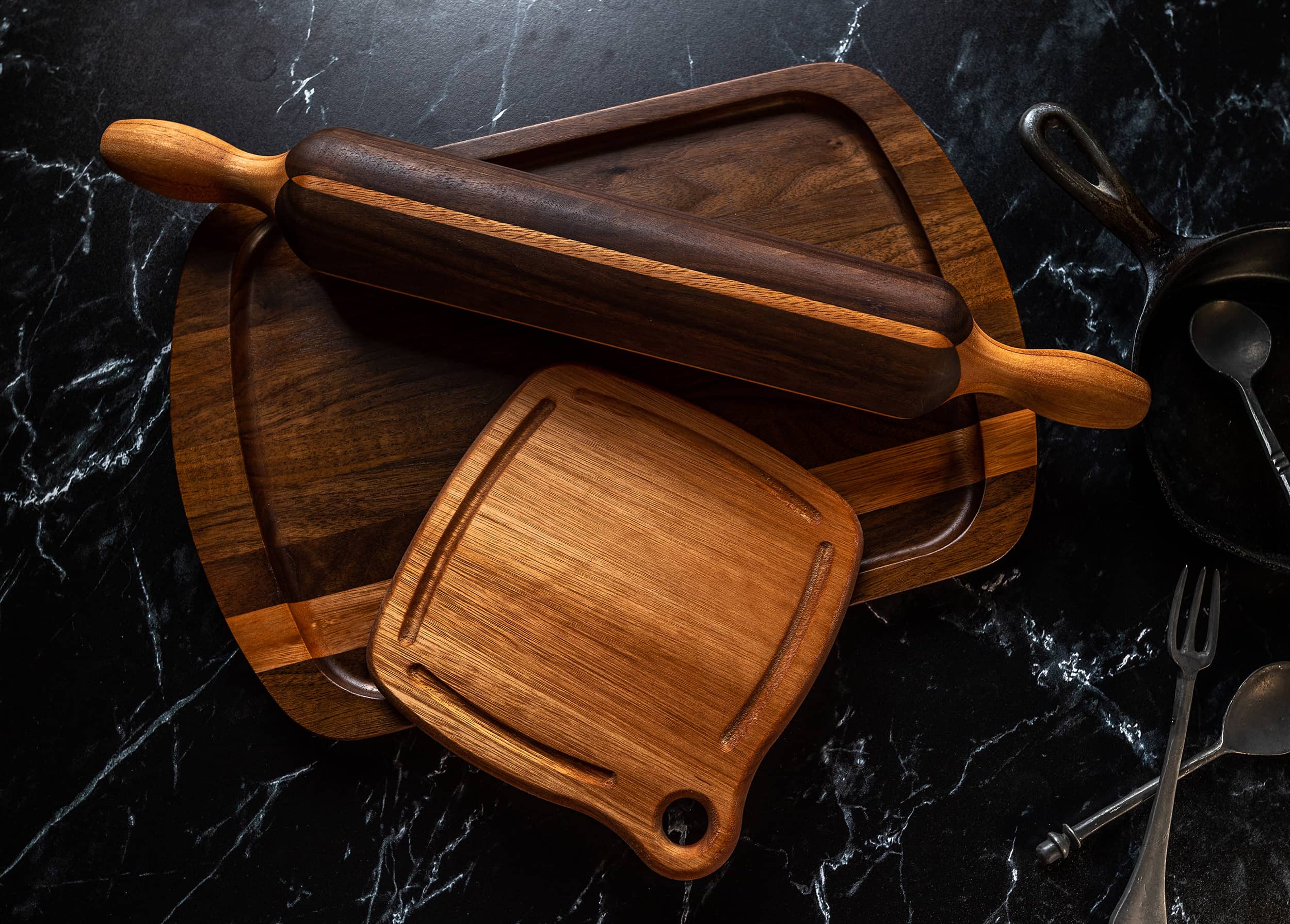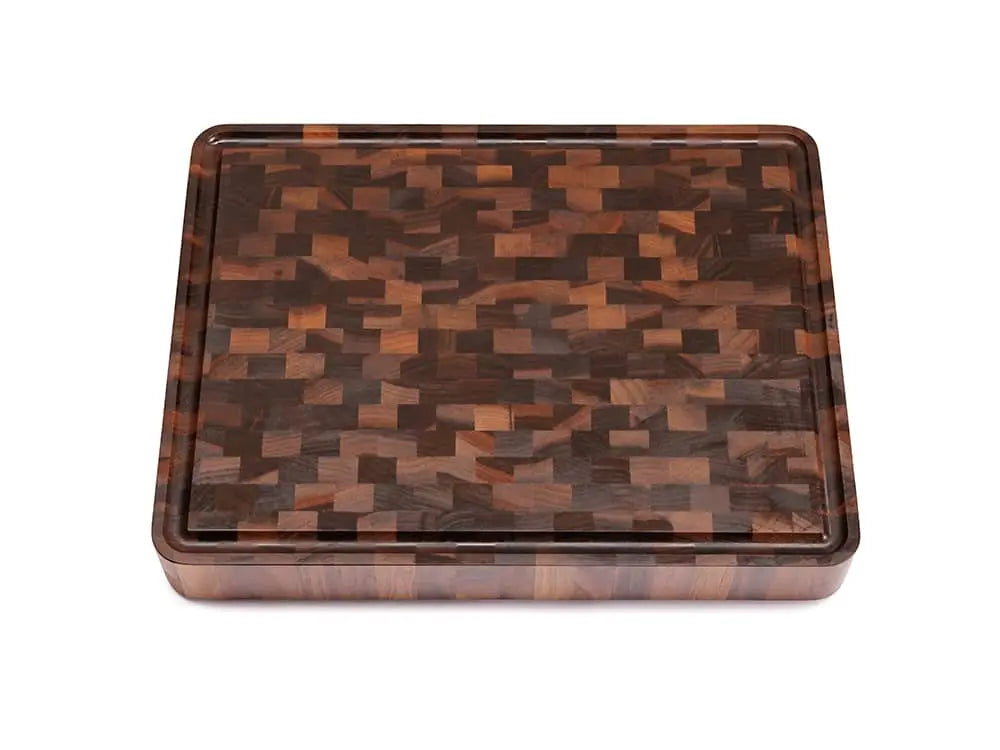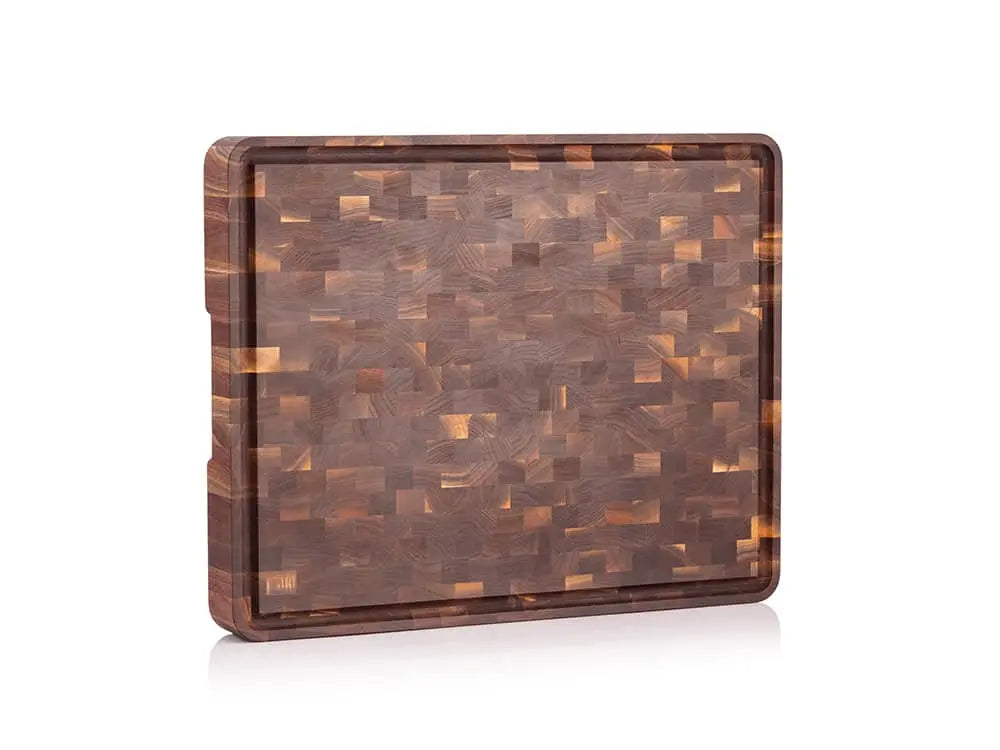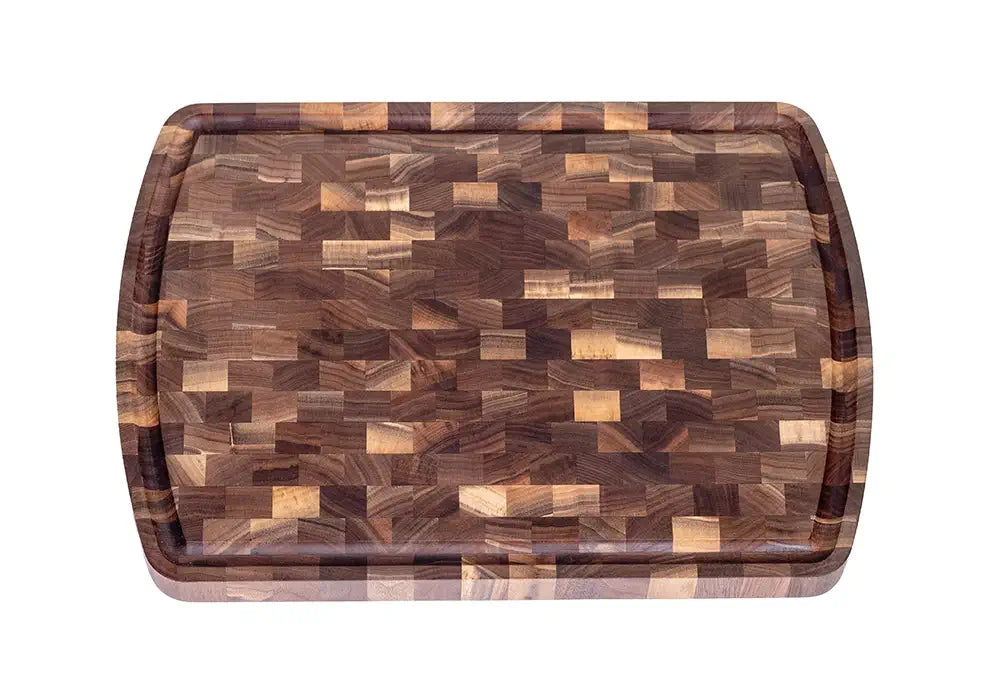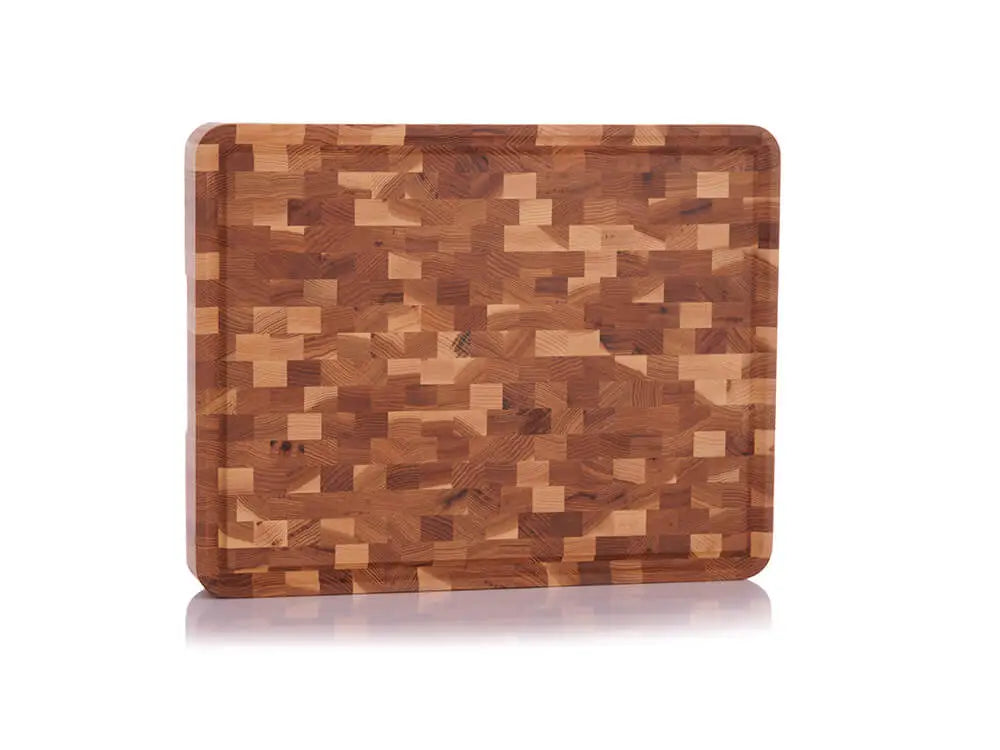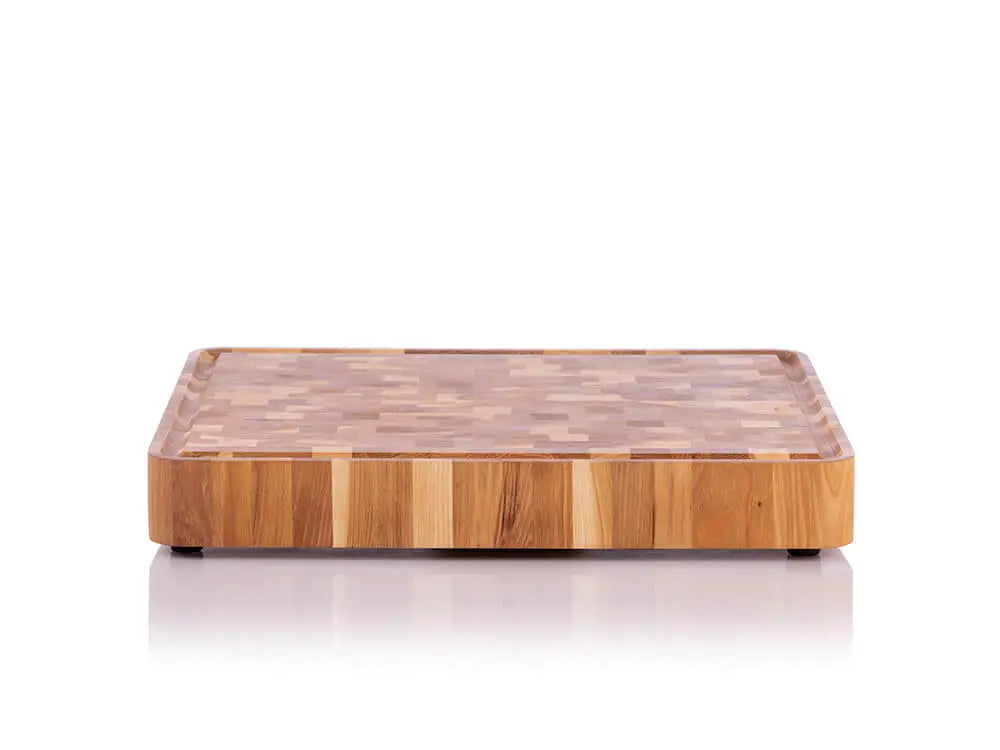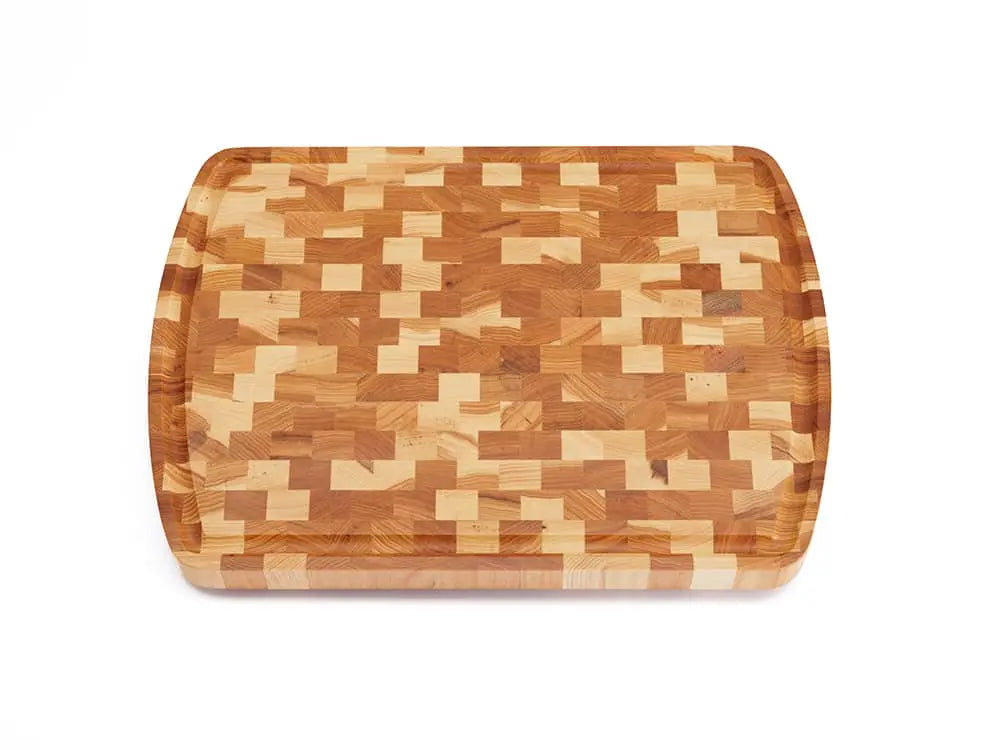Cutting Board Care & Maintenance
Keep your cutting board beautiful and functional for years with proper care
Quick Care Overview
- Clean: Wash with warm soapy water after each use
- Dry: Always air dry on edge, never flat
- Oil: Apply beeswax oil conditioner when board looks dry
- Store: Keep in ventilated area, away from heat sources
Initial Setup for New Boards
When you receive your end grain cutting board:
- Inspect for any shipping damage
- Apply a generous coat of beeswax oil wood conditioner
- Let oil absorb for 1 hour
- Wipe off excess with lint-free cloth
End grain boards are more porous than other cutting boards and need this initial seasoning to create a protective barrier.
Daily Cleaning Instructions
After Each Use:
- Remove food particles with nylon brush or dishcloth (use bench scraper for stubborn pieces)
- Wash with warm water and mild dish soap
- Scrub entire surface, edges, and bottom
- Rinse thoroughly with clean water
- Dry with dish towel
- Air dry on edge for at least 1 hour
Never Do This:
- ❌ Use steel wool or steel brushes
- ❌ Put in dishwasher
- ❌ Soak or submerge in water
- ❌ Use bleach
- ❌ Dry flat on countertop
Regular Maintenance Schedule
When to Oil Your Board
Apply beeswax oil conditioner when:
- Board appears dull or dry
- After washing with soap and water
- At least once monthly with regular use
How to Apply Oil
- Ensure board is clean and completely dry
- Apply small amount of oil with lint-free cloth
- Rub into entire surface, including edges
- Let absorb for 1 hour
- Wipe off excess
Understanding Wood and Moisture
Why Cutting Boards Crack: Uneven moisture distribution causes wood stress. When moisture isn't equalized throughout the board, expansion and contraction create cracks.
Prevent Cracking By:
- Equalizing moisture: Clean entire board, not just cutting area
- Maintaining oil barrier: Regular oiling slows moisture movement
- Proper storage: Allow air circulation on all sides
- Avoiding heat: Keep away from stoves, ovens, and direct sunlight
Deep Cleaning Solutions
Remove Stains
Lemon & Salt Method
- Sprinkle coarse salt on board
- Scrub with lemon half in circular motions
- Let sit 5 minutes
- Rinse and dry thoroughly
Baking Soda Paste
- Mix baking soda with water to form paste
- Apply to stains and scrub gently
- Let sit few minutes
- Rinse and dry thoroughly
Eliminate Odors
White Vinegar
- Wipe board with vinegar-soaked cloth
- Air dry completely
Baking Soda
- Sprinkle liberally over board
- Leave overnight
- Rinse and dry thoroughly
Storage Best Practices
Do:
- ✔ Store vertically or on edge
- ✔ Keep in ventilated area
- ✔ Allow air circulation on all sides
- ✔ Hang on wall for decorative storage
Don't:
- ❌ Store near heat sources (stoves, ovens)
- ❌ Keep in closed, humid cabinets
- ❌ Stack flat with other items on top
- ❌ Place in direct sunlight
Repairing Minor Damage
For Small Scratches:
- Lightly sand affected area with fine-grit sandpaper
- Clean dust thoroughly
- Apply generous coat of beeswax oil conditioner
For Minor Cracks:
- Address immediately before they worsen
- Keep board well-oiled to prevent expansion
- Contact us for repair guidance on significant damage
Common Mistakes to Avoid
- Using as hot plate - Heat damages glue joints and over-dries wood
- Partial cleaning - Creates uneven moisture distribution
- Storing while damp - Promotes warping and bacterial growth
- Neglecting oil treatment - Leaves wood vulnerable to moisture damage
- Dishwasher cleaning - Causes severe warping and joint failure
Need More Help?
- Purchase beeswax oil wood conditioner
- Contact customer support
- Browse our cutting board collection
Proper care ensures your Amish Classic Creations cutting board remains a treasured kitchen tool for generations.



